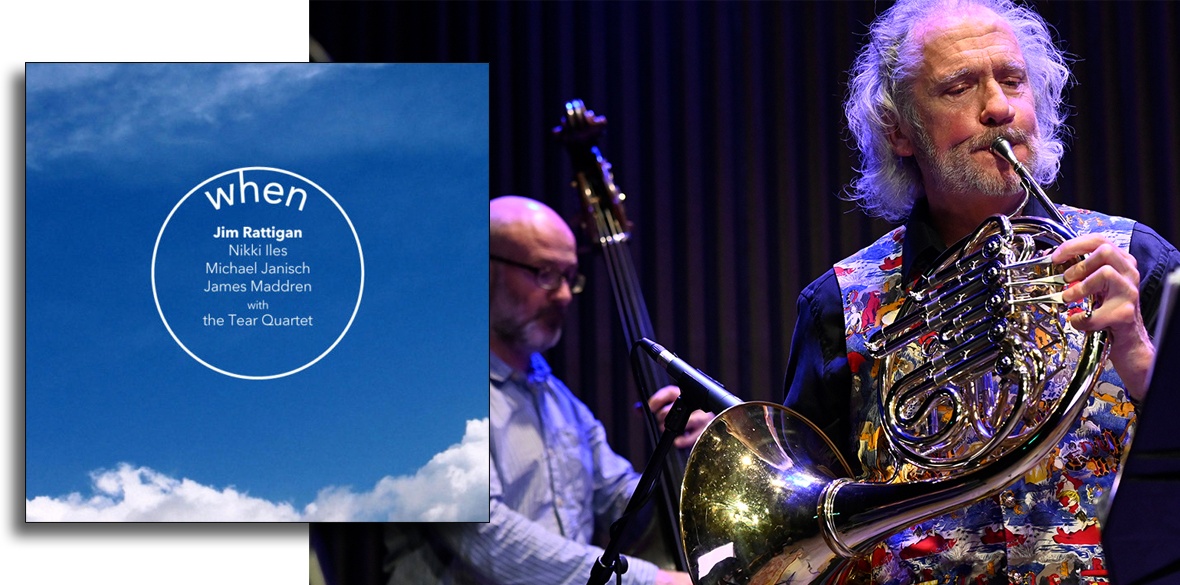This is the last article you can read this month
You can read more article this month
You can read more articles this month
Sorry your limit is up for this month
Reset on:
Please help support the Morning Star by subscribing here
I DOUBT if there is a more multifaceted and versatile musician in Britain than French horn virtuoso Jim Rattigan.
Apart from his years as a classical musician with the London Symphony Orchestra and many other ensembles, and as studio stalwart playing James Bond themes or alongside Paul McCartney, George Michael, Shirley Bassey or Adele, he has turned to jazz over the last two decades.
His band Pavillon has recorded some prime albums and his new recording When features pianist Nikki Iles, bassist Michael Janisch, drummer James Maddren and The Tear String Quartet. Combining two worlds of classical and jazz music, they are “not crossover music but a juxtaposition, with the two styles working side by side,” he says.
His first encounter with jazz was at the age of 16, when he was “blown away” while hearing Oscar Peterson’s Night Train. “I dabbled on piano, transcribing what I could from his albums — ambitious or what?
“Jazz for me then was something to enjoy listening to and play purely for pleasure. It wasn’t until I left the Royal Philharmonic that I decided to get out there and play jazz full time.”
He listened to singers like Ella Fitzgerald to pick up their phrasing and went to lots of gigs —“that’s essential” — and working closely with pianist and composer Hans Koller was a real inspiration.
Rattigan has listened to every type of instrumentalist: “I loved the phrasing of saxophonists like Coleman Hawkins, Sonny Rollins and Stan Getz — how they kill you with their time, their phrasing.
“I tried to emulate the sound of my principal horn of the London Philharmonic. I've played so many different genres. The tunes I wrote for When were influenced by my love for Richard Strauss’s strings. But it’s jazz that gives me that sense of freedom.”
His bandmates on the album When “make me feel like the luckiest bloke alive!” he exclaims.”They were really up for it and gave so much of themselves. They put the music first, which you can hear. Wonderful!”
Rattigan’s beautifully cavernous tone contrasts with the undulating strings and Iles’s lucid piano on the opener Now and Then and there’s a serenity to his billowing notes on River of Dreams, while Maddren’s drums pound below the strings on Patricia’s Song.
The horns gambol through Fool and the pathos of Solace is expressed through Rattigan’s mellow sound, Janisch’s earthy bass, Iles’s crystalline notes and the whole ensemble’s empathetic unity.
“You have to dedicate a lot of time to the instrument,” Rattigan says, when asked why there are so few French horn jazz masters like John Clark and Tom Varner. The length of tubing, its rotary valves and [the fact] that it faces backwards all means you have special challenges to overcome.”
When he hears himself on record, it’s on a completely different sound trajectory: “Nothing like a trombone, for example. I come from a classical background and that brings an orchestral French horn sound which comes first to my music. It’s essential to what I do.”
Stand-out moments of his career to date include playing with great American jazz musicians such as Carla Bley and Charlie Haden. The latter was “quite a character. Never quite knew what to expect — we ran out of music on one gig so we played a blues to fill it out.
“I got to play a couple of choruses with him. That was a bit of a highlight in my career.”
His album When, which soothes and excites in equal measure, is certainly another. Get hold of it.











